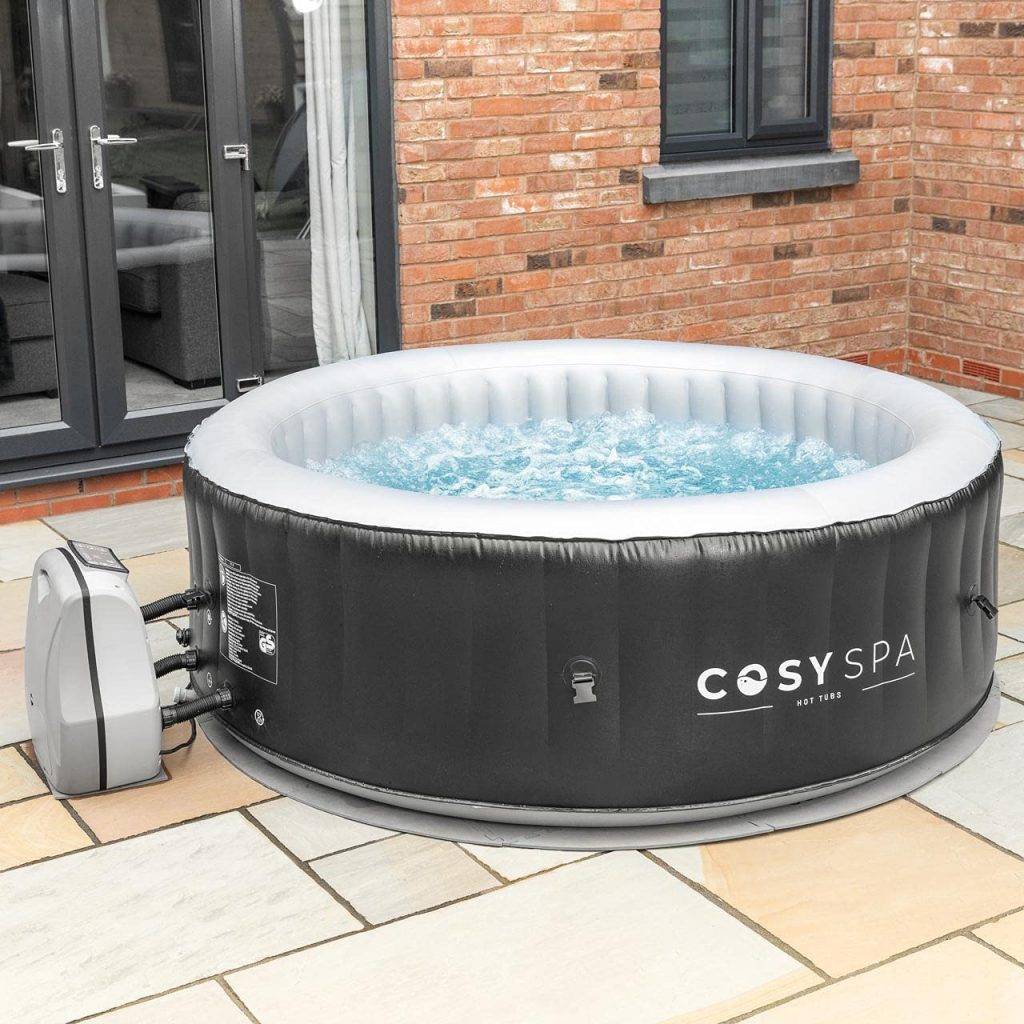How do small round hot tubs compare to other types of hot tubs?

Small round hot tubs are cheaper than other tub types. The downside is they lack bench seating and jets. However, they can be great for families or a small backyard. In addition, they don’t require an in-ground installation. The soft-sided tubs can be purchased online or at fairs.
Inflatable hot tubs are cheaper than traditional tubs
When compared to traditional tubs, small round inflatable hot tubs are significantly cheaper. They can be purchased for less than PS300, making them a much better investment for a small budget. These tubs can be inflated with a supplied air blower and are ready for use the same day. Furthermore, they use much less electricity than traditional tubs, saving you money on running costs.
However, they do have some drawbacks. Unlike traditional tubs, inflatable hot tubs do not come with hydrotherapy features. They also do not have control over the temperature of water. The water temperature is affected by the outside temperature, so it’s essential to check the temperature before committing to a particular model.
While inflatable tubs are a cheaper option than traditional tubs, they are not as luxurious. On average, they cost about $50/month, whereas traditional tubs cost $1000 or more. Depending on the size and the quality, you can save a lot of money by purchasing one instead of two or three traditional tubs. You can also sell your inflatable hot tub once you no longer need it. The cost of a luxury acrylic tub can be more than $15,000, and not everyone can afford to spend that much money on a tub.
Inflatable hot tubs are also easy to transport around your property. Some people leave theirs outside during summer and bring them inside for the winter months.
They have fewer jets
Small round hot tubs usually have fewer jets than other types, but they can still be a great choice if you are looking for a small tub. Typically, a small round hot tub can hold up to 300 gallons of water. They are also smaller and quieter than other types, so they are good for quiet relaxation.
These smaller hot tubs are also more energy efficient and are perfect for two to three people. They typically use one heat pump and 110-volt electricity. They also have lower jet counts than other types, with around thirty to forty jets for a two-person tub. They also tend to be less expensive than larger tubs. These types of tubs are not suitable for hard water or salt water compatibility, but they still offer a comfortable experience for two or three people.
Small round hot tubs are great for two or four people, but if you want more jets, you can consider one of the larger models. Larger models can seat up to eight people and require two heat pumps. However, they use more energy than smaller models.
The main difference between small round and larger acrylic hot tubs is the amount of jets. Softtubs are cheaper and usually have fewer jets than their larger counterparts. Soft tubs have a polybond foam shell and a padded interior. These models are incredibly durable.
The cost of a hot tub varies a great deal. Prices can be higher or lower depending on the manufacturer and the time of year. Also, the brand and retailer can affect the price. Some companies offer price guides for their products, but some are not transparent. Make sure to compare prices from different companies before you buy a tub.
They have a rigid shell
Small round hot tubs are made of rigid shells, unlike other tub styles, which are made of flexible plastic or foam. They are also resistant to wear and tear and offer a high-gloss finish. They are a great choice for hot tubs because they are lightweight, durable, and easy to clean.
They are also more durable than inflatable tubs. Inflatable tubs usually leak after a month or so, but recent designs are much stronger. In addition, they can be easily moved from one place to another by rolling on their side. Many of them also have lights and Bluetooth connectivity, and come with a variety of seating options.
Small round hot tubs are available in various shapes and sizes. The Crown XL, for example, is a model designed for tall people with a deep 38-inch shell. Another style is the Impulse, which has a basic plug-and-play design and can fit through a door.
Hot tubs can be made of several different materials, including plastic, metal, or acrylic shell. Hot tub manufacturers must make sure the materials used are durable and will last for many years. They should also have a warranty for the hot tub’s electrical system and shell structure. Although you’ll need to check the warranty before purchasing, the warranty for these tubs is up to ten years.
They lack bench seating
Square and round hot tubs both have their advantages and disadvantages. A round tub offers more flexibility when it comes to seating arrangements, while a square tub only offers fixed positions. If you want to enjoy a hot tub with a large group of people, a square tub may not be the best option. A square tub has limited configuration and may be difficult to fit enough bench seating to accommodate everyone.
One solution is to place a bench around a sunken hot tub. This option requires more work, but offers a modern, clean look. Bench seating can be made from wood or composite materials. If wood is an option, it should be properly sealed and protected. To choose the right bench for your hot tub, consult a local home improvement store or contractor. They will also be able to advise you on the best materials for your climate.
Bench seating can improve the therapeutic benefits of hot tubs. In addition to being more comfortable, bench seating can also be uniquely designed. For example, a round hot tub without bench seating may not be as functional as a square tub. Bench seating can also help keep children from running around the hot tub while they are relaxing.
They have a longer warranty
Small round hot tubs come with a better warranty than their oval cousins. Hot springs, the manufacturer of these tubs, use only the best materials and quality control methods, ensuring that they last for years to come. These tubs are also more environmentally friendly, using less electricity, and using less chemicals. The warranty is typically 5 years.
Hot tub warranties differ from manufacturer to manufacturer, but in general, a warranty will cover the shell of the tub for 5 years against leaks and plumbing problems. Some warranties also cover a no-service-charge policy. However, a warranty will not cover all types of problems and may not be applicable if the tub is second-hand. Therefore, it’s important to shop around. In addition to reading manufacturer warranty information, you should also talk to existing customers to gauge how satisfied they are with their purchase.
About the Author

I am a writer who does research on the bathroom and researches whether minimalist or modern bathroom equipment and products. I will continue to write to make the time spent in the bathrooms enjoyable.
